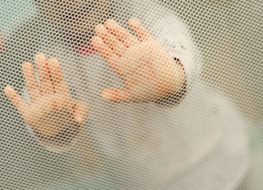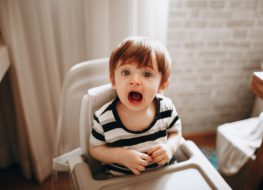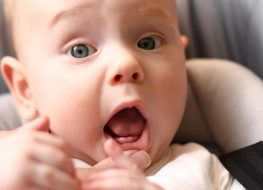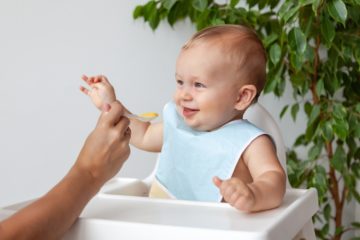
Bibs are one of the essential baby gear that parents must have and prepare even before their child is born. Because they are a vital part of childrearing, hopeful and first-time parents are scrambling online to answer their questions about bibs.
Lucky for you, we’ve compiled in this article the most common bib-related concerns first-time parents have. And we’re here to answer and unpack all of them with you. Through this bible, you will know when babies need bibs, what bibs are needed for certain occasions, or if babies need bibs at all.
What Are Baby Bibs For?
Since babies don’t have fully developed motor skills to handle any cutlery and utensils yet, they are quite the messy eaters. As a result, frequent food spills and meal gunk are unavoidable, especially at the beginning of parenthood.
And because no parent wants their child to look untidy and sloppy, the glorious baby bib was born! It is a piece of clothing that stops unwanted gunk, crumbs, or spills from dirtying your baby’s clothes while eating.
These bibs are worn and clasped around their neck with a button or a velcro strap, generally covering and protecting their neck and chest area. Bibs come in various sizes and materials and have plenty of other purposes. Let’s break a few of these bib types down.
Drooling Bibs
Babies have yet to master and control most of their muscles, including their muscles for swallowing. As a result, our tiny tots can’t stop their steady saliva stream from dripping from their mouths.
Luckily, bibs are versatile. They aren’t solely used during feeding time: they can also absorb the slippery drool before it reaches your toddler’s skin and clothes. As the name indicates, drooling bibs, or dribble bibs, are absorbent bibs that take care of your baby’s drooping spit.
A drool bib is helpful during breastfeeding and bottle feeding, making it one of the most effective bibs for newborn babies. Generally, drool bibs are smaller than regular bibs. Because of their size, babies can wear them all day.
Feeding Bibs
As your toddler grows, their needs and necessities also evolve with them. For example, babies transition from soft and mashed baby meals to solid foods when their teeth start popping out at six months. And while you won’t have to worry about mushy food spoiling your child’s clothes, eating solid food brings a whole different (and messier) trouble.
The feeding bib looks like a regular bib, except it has a pocket attached to its lower end. This pocket is designed to catch any falling food debris as your child munches on their meals. Feeding bibs catch both solid foods and liquid spills, so you won’t have to clean up a disastrous mess every mealtime.
Generally, feeding bibs are made with plastic, rubber, or silicone for an easier and faster bib cleanup.
Smock Bibs
While messy mealtimes can be a headache-inducing nuisance to parents, experts actually encourage messy eating, as it is one of the most important sensory plays. Your child learns tons of sensory information as they play with their food. Messy eating can even develop self-feeding habits in your child.
Does that mean we just have to let food and drinks smear and stain our babies’ outfits? Not exactly! Bib manufacturers created smock bibs or long-sleeved bibs to encourage both messy sensory play and clean feeding time.
Smock bibs are longer bibs that drape over your baby’s entire frame, protecting their entire body from clutter and spillage as they eat. They look almost like long-sleeved shirts and are removable from the back. Smock bibs are typically designed as waterproof for easier cleaning.
Disposable Bibs
We can’t always leave our babies at home. Sometimes, we have to take them with us during our travels or bring them with us even for a simple lunch outside. Fortunately, some bibs aren’t too bulky to carry during these trips.
Disposable bibs are made with soft, lightweight, and waterproof material to keep your toddler clean while they eat outside. However, while they do come in handy for occasional outside travels, disposable bibs aren’t meant for daily use.
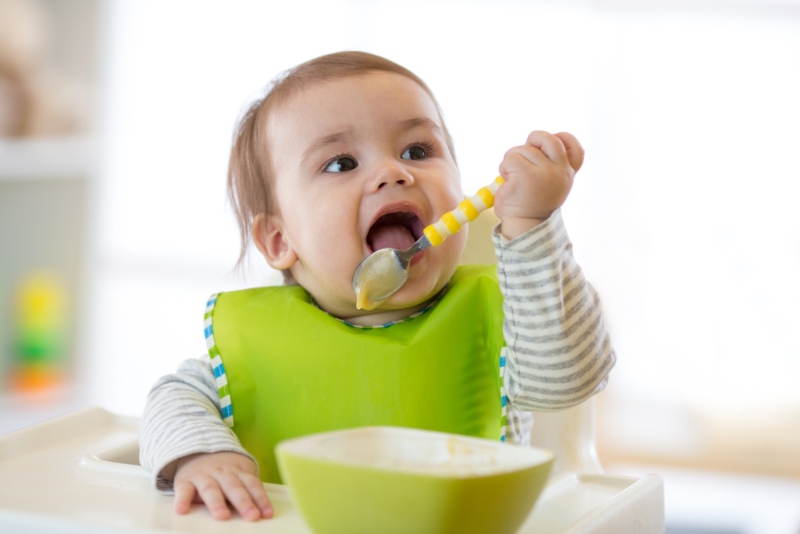
What Are Baby Bibs Made Of?
A baby bib is made with various clothing fabrics and other materials depending on its use. Most bibs are made with cotton because of the material’s abundant availability. Cotton makes your toddler’s bib soft and durable.
If you want a more absorbent fabric, bibs created using terrycloth are your best bet. Terrycloth bibs are lightweight and highly durable. If you’re looking for waterproof bibs, buy Polyurethane Laminate (PUL) fabric and silicone bibs.
To keep your little one warm and cozy during the wintertime, flannel and fleece bibs can shield your baby’s tiny frame from the biting cold. While they aren’t too common, bamboo fabric is the perfect bib material for babies with sensitive and highly-irritable skin.
When Do Babies Need Bibs?
Babies can start wearing drool bibs as early as one to two weeks of age. Parents put regular bibs on their children as soon as they begin eating baby food, puréed fruits, and mashed vegetables. Babies transitioning from soft meals to solid foods at around six months can start wearing feeding bibs.
How Long Do Babies Wear Bibs?
It depends on the bib usage and the child’s behavior. Regular bibs are generally used during the first four to six months of a child’s life while feeding bibs are typically worn from six months until two years of age.
How Many Baby Bibs Do I Need?
The number of bibs you need will largely depend on the bib’s use and your child’s habits. Generally, messy eaters will need four to six regular bibs to get them through the week. Heavy droolers will also need at least four dribble bibs if they regularly use them.
How Do You Clean Bibs?
After learning the what’s, the when’s, and the how many’s, the next step is to know how to clean and maintain your child’s baby bib. As always, the cleanup will highly depend on the bib’s material, so it’s best to read the bib’s labels before washing.
Some parents throw bibs along with other clothes and fabrics in the washing machine, but some prefer to clean their toddler’s bibs manually. In case you fall under the latter category, here are a few guidelines you can follow:
- Treat and clean the smears before washing. Some food stains are heavier and harder to clean than others, so even after going through the washer, they still remain. Applying stain spray or remover on the affected areas can quickly clean them off.
- Soak the bib in water overnight. Like the previous tip, soaking the bib overnight helps get rid of heavy stains faster. Doing so loosens the food stains from the clothing material, making it easier to remove these smears when you wash.
- NEVER wash with hot water. While using hot water is one of the best ways to remove stains easily, this method may damage your child’s bib, as the scalding temperature can shrink and alter the fabric.
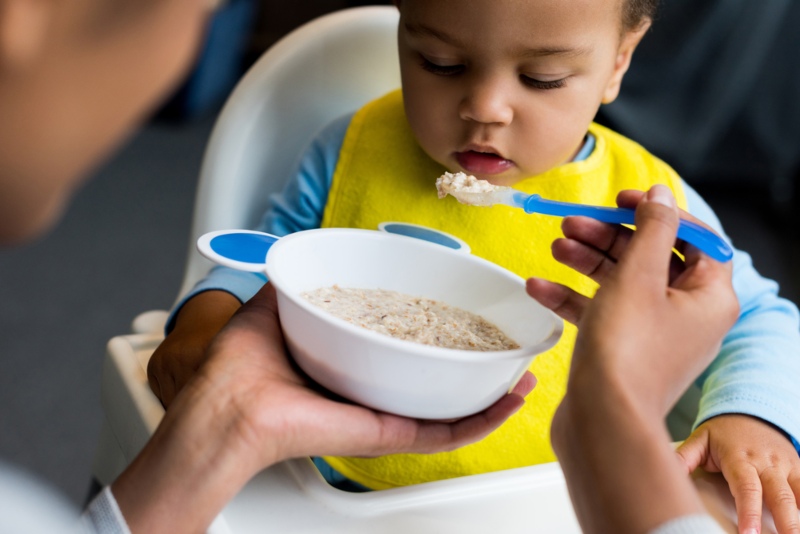
Let Your Child Bibble and Babble with Ashtonbee!
Ashtonbee offers baby bibs that are highly durable, lightweight, water-resistant, easy to clean, and perfect for your tiny tot. Our feeding bibs are made with food-grade silicone, protecting your children from chemicals like BPA, PVC, phthalate, and lead.
Our silicone feeding bibs are also equipped with adjustable straps to accommodate any size and wide pockets to catch any falling crumbs. Ashtonbee bibs come in three vibrant colors: orange, green, and blue.
Get Your Bibs From AshtonBee
Hopefully, we answered your questions about baby bibs and quieted some of your parent jitters about using this multifunctional babywear. Perhaps you’re already scouring every corner of the web for high-quality baby bibs.
Get ahead of the baby bib game with Ashtonbee!
Not looking for a bib right now? We also offer various other baby accessories that your child may need. Look through our selection and get all the baby gear you and your baby will ever need!

